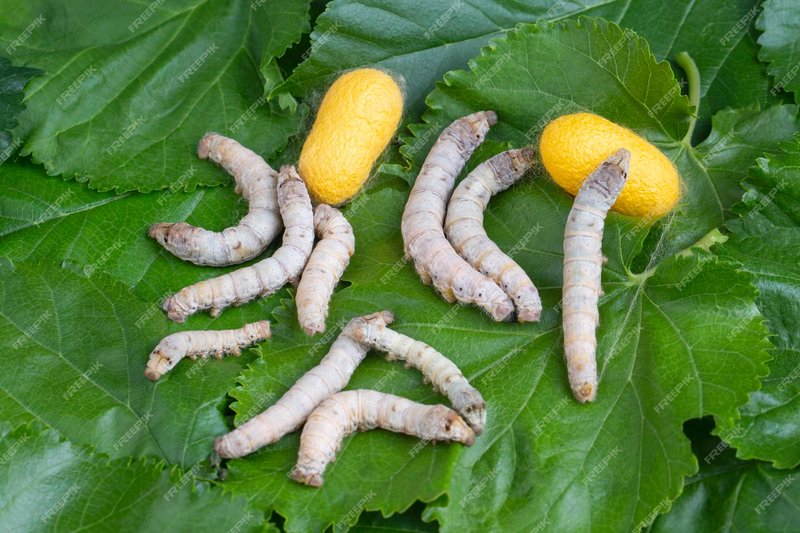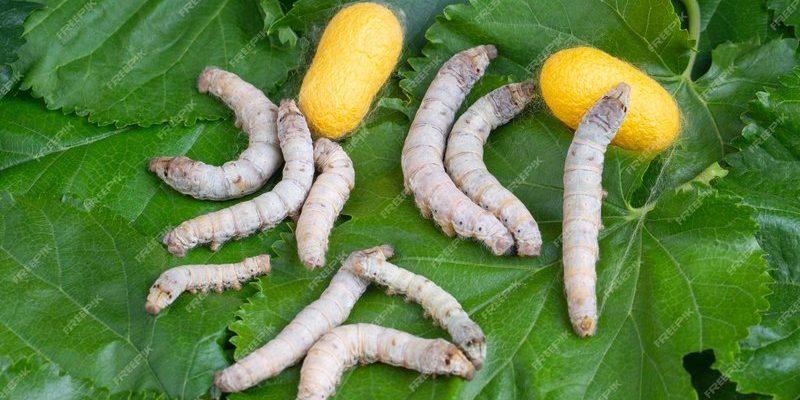
You might be wondering what these colors signify and why they matter. Well, silkworms—like many other creatures—carry a unique set of genes that influence not just their appearance, but also their ability to thrive. From the classic white to more exotic shades, understanding these color variations helps us appreciate their biological diversity. Whether you’re a curious beginner or just someone who’s stumbled upon this intriguing topic, there’s so much to learn about these little silk-producing machines.
Basic Colors of Silkworms
Silkworms typically come in a few main colors, and each one has its distinct characteristics. The most familiar shades are white, yellow, and light green. These colors often indicate different strains of the Bombyx mori, which is the most common breed used for silk production.
– White Silkworms: These are the classic type most people think of when they hear “silkworm.” Their color shows they’re healthy and often associated with traditional silk production.
– Yellow Silkworms: These worms can be a bit more interesting. They often signal different genetic backgrounds. Yellow silkworms typically produce a finer and softer silk but require specific conditions to thrive.
– Light Green Silkworms: A bit rarer, these indicate a genetic variation that may be tied to environmental factors, such as temperature and humidity. They can often thrive in varied conditions, displaying resilience.
Recognizing these basic colors helps silkworm breeders select the right worms for silk quality and disease resistance.
The Role of Genetics in Color Variation
Here’s the thing: the color of a silkworm isn’t just for show. It’s deeply rooted in its genetics. Each color stems from specific genes that control pigmentation. Think of these genes like a recipe: some provide the ingredients for a white silkworm, while others mix in the extras for yellow or green hues.
Color variations are often a result of mutations within the genetic structure. These mutations can occur naturally over generations or can be influenced by environmental stressors. For example, a silkworm that’s exposed to fluctuating temperatures might develop a different pigment than its siblings, leading to unique traits that can help them survive.
Understanding these genetic elements not only helps researchers learn more about silkworms but also plays a key role in breeding programs. When breeders know what colors are linked to beneficial traits, they can make informed decisions to improve the health and productivity of their silkworms.
Environmental Influences on Color
You might be surprised to learn that a silkworm’s color can change based on its environment. Factors such as temperature, humidity, and even diet can impact the pigmentation of these creatures.
– Temperature: High or low temperatures can trigger genetic responses that affect color. For instance, extreme heat might lead to lighter-colored worms, while cooler environments can enhance darker pigmentation.
– Humidity: The right humidity levels are crucial for silkworm development. In drier conditions, mutations may occur that lead to unique color variations. Breeders often monitor these conditions closely to ensure optimal growth.
– Diet: What a silkworm eats can also influence its color. Silkworms primarily feed on mulberry leaves, but variations in their diet can lead to unexpected changes. If fed a certain type of leaf, they might develop a richer or more vibrant hue.
Understanding how environmental factors influence silkworm color is essential for anyone interested in breeding or raising them. It opens up possibilities for creating silkworm strains that are not only colorful but also resilient and productive.
Color and Health of Silkworms
Honestly, the color of a silkworm can be a good indicator of its health status. Bright, consistent colors usually signify that the worms are in good shape, while pale or mottled colors can suggest underlying issues.
– Healthy Silkworms: A vibrant color often indicates a robust metabolism and a good diet. These silkworms are likely to grow more quickly and produce higher quality silk.
– Stressed or Sick Silkworms: If a silkworm appears dull or has lost color, it might be facing stress from factors like inadequate temperature or poor nutrition. This can lead to slower growth and lower silk production.
By keeping an eye on the colors of your silkworms, you can respond quickly if something seems off. It’s like monitoring a plant’s health by looking at its leaves. If they start turning yellow, you know it’s time to look into watering or light conditions.
Breeding for Color Variations
For silk farmers, color variety isn’t just aesthetic; it can be a strategic decision. By breeding for specific colors, farmers can create unique silk products that cater to niche markets.
– Market Demand: Unique colors can command higher prices. For example, silk made from yellow silkworms might be sought after for special textiles. If farmers understand the demand, they can focus their breeding efforts accordingly.
– Combining Traits: Breeders can selectively mate silkworms of different colors to produce offspring that exhibit desired characteristics. For instance, pairing a strong, yellow silkworm with a high-yield white silkworm might lead to a new breed that combines both resilience and excellent silk quality.
– Conservation: Breeding programs can also focus on maintaining a diverse gene pool. This helps prevent inbreeding and ensures the overall health of the silkworm populations.
Color variations in silkworms are not just beautiful—they can be economically advantageous, too!
Personal Experiences with Silkworms and Colors
Let me explain how these color variations can be fascinating on a personal level. A friend of mine decided to start a small silk farm. At first, she only had the usual white silkworms. But as she learned more about genetics and environmental influences, she ventured into yellow and green silkworms.
Not only did her silk become more diverse, but she also found herself falling in love with the process. Watching how each color affected the silk quality and even the work involved in raising them became a rewarding challenge. Now, she sells her unique silk products at local markets, sharing the stories behind each color.
So, whether you’re a hobbyist or a serious farmer, exploring these diverse colors can make your silk journey so much richer.
Silkworm color variations are more than just eye candy; they’re a reflection of genetics, environment, and health. From the classic white and yellow hues to the rarer greens, each color tells a story about the silkworm’s life. Whether you’re interested in breeding, raising silkworms, or just curious about their colors, understanding what these variations mean can deepen your appreciation of these remarkable creatures.
So, the next time you come across a silkworm, take a moment to admire its color. You might just find a new layer of meaning in its simple presence. Embrace the diversity in the world of silkworms, and you’ll discover that there’s beauty—and a bit of science—in every shade.

